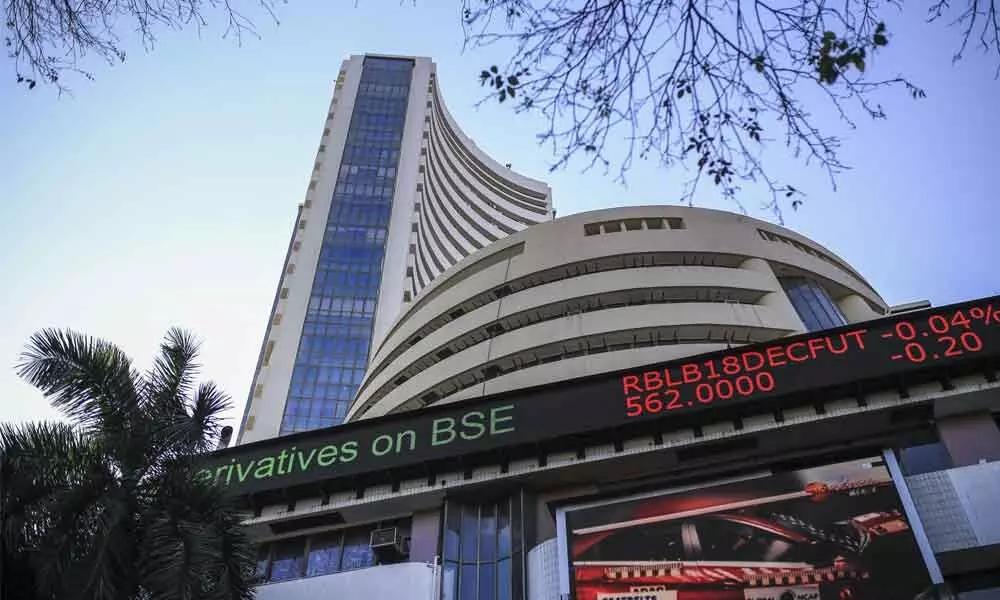Year Ender: A look back at the highs and lows of India's trade
India’s merchandise exports have grown every month in 2021, spurred by pent-up global demand, and they are on their way towards achieving the government’s target of $400 billion annually. While the government has repeatedly said that exports have surpassed pre-Covid levels, most of the growth is from higher commodity prices and not necessarily growth in trade volumes.
image for illustrative purpose

India's merchandise exports have grown every month in 2021, spurred by pent-up global demand, and they are on their way towards achieving the government's target of $400 billion annually. While the government has repeatedly said that exports have surpassed pre-Covid levels, most of the growth is from higher commodity prices and not necessarily growth in trade volumes.
Apart from price volatility, a shortage of shipping containers and a liquidity crisis at home have marred calendar 2021 for exporters. While foreign orders have risen in fits and spurts, a wave of sudden cancellations has gripped many sectors.
Export recovery
Despite economic uncertainty and the emergence of new Covid-19 virus variants across the world, India's overall exports rose every month in 2021. Economists had initially forecast that growth would simply be on paper, a result of the base effect that makes any increase look better than the disastrous drop in shipments in 2020.
Exports even crossed pre-pandemic levels. India's merchandise and service exports rose to $418.74 billion in April-November, a growth of 37.2 per cent over the same period in 2020. They were 19.1 percent higher than in the same period of 2019, before the pandemic struck.
Exports have continued an unbroken 12 months of growth, according to commerce department data as of November. Officials said the current rate of growth is expected to continue as of now. While it has not been officially released, government statistics for December show that exports stood at $23.82 billion in the first three weeks of December, up by 36.2 percent from a year earlier and 27.7 percent higher than in December 2019.
Major items stabilise
Oil prices, also called India's double-edged sword, led to a major rise in both India's export and import figures. Processed petroleum is India's largest exported item, while crude oil is its largest import. With the rise in oil prices, petroleum exports crossed the total earnings of 2020 in the first six months of 2021.
Global oil prices have risen over 50 percent this year, supported by recovering demand and supply cuts by the Organization of Petroleum Exporting Countries and its allies, collectively known as OPEC+. The average monthly price of a barrel of Brent crude shot up to $83.54 in October from $53.4 in January 2021.
Container crisis
After attaining crisis proportions earlier this year, shipping containers were again in short supply by October, which increased logistics costs for exporters and made businesses uncompetitive. In April, the government had declared victory over the initial container crisis but the shortage is now back just when export volumes were increasing as the industry clears inventory and global demand rises.
China controls more than 82 percent of global container manufacturing. With Chinese companies supplying their shipping corporations and ports on a priority basis, the rest of the world has been left with an artificial crisis. The Federation of Indian Export Organisations has demanded that the government set up a large Indian shipping company, given that the country's shipments are now carried exclusively by foreign haulers. India remits about $65 billion every year as transport charges overseas, according to industry estimates.
One impact of the crisis has been the sudden raft of cancellations for low-value, high-volume cargo. With freight costs exceeding the production value of cargo, both exporters and importers are finding it difficult to justify a trade.
Lack of liquidity
Growing levels of order cancellations further contributed to the liquidity crisis for exporters throughout 2021. Faced with no payment for products already manufactured or in some cases shipped, exporters have struggled to meet demand when costs have also risen.
Crucial export sectors such as engineering goods, chemicals, leather and leather goods and heavy industries had taken a hit in the first quarter of the year itself, which is considered to be a prime export season, owing to the cash shortage. This was especially true for micro, small and medium enterprises, which contribute almost 40 percent of India's overall export capability. MSME-run sectors such as handicraft and carpet exports have struggled.
RoDTEP announced
Exactly two years after it was announced and after missing several deadlines, the Remission of Duties and Taxes on Exported Products (RoDTEP) scheme was launched fully. On August 13, the commerce department announced the much-awaited new export refund rates under RoDTEP. But exporters say many products have been excluded, the rates are too low, and that confusion persists regarding the functioning of the scheme.
RoDTEP became India's foremost export incentive scheme and replaced the Merchandise Exports from India Scheme, which was discontinued after the World Trade Organization ruled in November 2019 that it distorted trade by providing direct subsidies. While exporters still await pending MEIS dues, the government significantly slashed the benefits under RoDTEP, which has tax rebates in the range of 0.5-4.3 percent currently.

